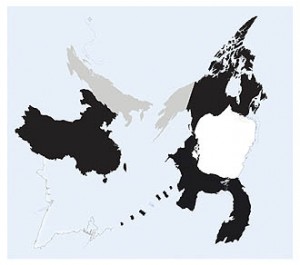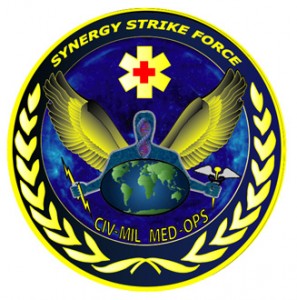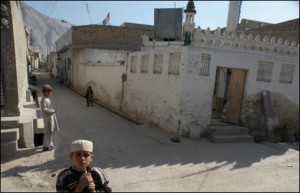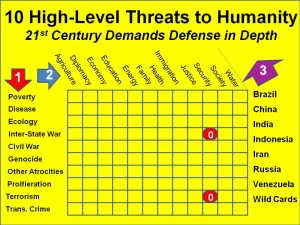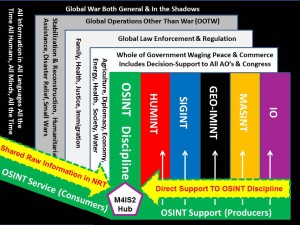
More Than Espionage: Open-source intelligence should be part of solution
By Andrew M. Borene
Here's some food for thought: White House policymakers and Congress can help develop an increasingly robust national intelligence capacity by investing new money in the pursuit of a centralized open-source intelligence (OSINT) infrastructure.
Phi Beta Iota: In 1992 it was the Central Intelligence Agency (CIA) and The MITRE Corporation that destroyed the emergent Open Source Intelligence (OSINT) movement. CIA refused to deal with OSINT unless everyone associated with it was a U.S. citizen with a SECRET clearance (we do not make this stuff up), and MITRE misled the US Government in such a way as to promote their Open Source Information System (OSIS) that ended up providing analysts mediocre high-side access to six open sources (LEXIS-NEXIS, Oxford Analytics, Jane's Information Group, Predicast and two other non-memorable sources). The US Marine Corps, which was the proponent for OSINT based on the lessons learned in creating the Marine Corps Intelligence Center (MCIC), argued for an outside the wire center of excellence that would have access to all sources in all languages (in part because the “experts” flogged by contracting firms may have been expert once, but are not “the” expert on any given topic for any given day–for that we prize European and Chinese and Latin American graduate students about to receive their PhD).
During his tenure as Director of the Community Open Source Program Office (COSPO), Dr. Joe Markowitz, the only person ever to actually understand OSINT within CIA, closely followed by Carol Dumaine, founder of the Global Futures Partership, tried four years in a row, with the support of Charlie Allen, then Deputy Director for Collection (DDCI/C), to get an OSINT program line established. Four years in a row, Joan Dempsey, then Deputy Director for Community Management (DDCI/CM) refused. The secret IC is incapable of creating an Open Source Agency (OSA) as called for by the 9-11 Commission, and any money it puts in that direction will be wasted unless the Simmons-Steele-Markowitz recommendations briefed to the Office of Management and Budget (OMB) are respected.
Dr. Markowitz is also the author of the OSINT portions of vital Defense Science Board reports such as Transitions to and from Hostilities, and is unique within the CIA alumni for understanding both the needs of defense and the possibilities of OSINT. COSPO was an honest effort–CIA/OSC is not.
CIA and LEXIS-NEXIS still do not get it–they both want a monopoly on a discicpline they do not understand and cannot monopolize. The US Government is a BENEFICIARY of OSINT, not its patron, and any endeavor that is not outside the wire, transparent, and under diplomatic and civil affairs auspices, is destined to fail, just as CIA/OSC has failed all these years, just as LEXIS-NEXIS, Oxford Analytica, and Jane's Information Group have failed on substance all these years. They profit from government ignorance, they do not profit from actually connecting the government to sources that are largely free, not online, and not in English.
Continue reading “Journal: LEXIS-NEXIS OSINT Kiss to CIA/OSC”

